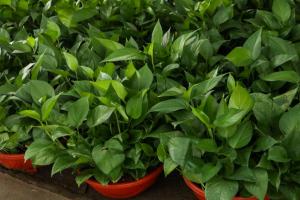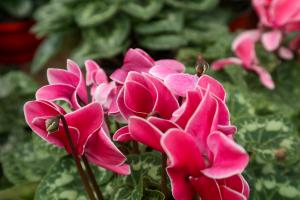How to Plant Zinnia Seeds Indoors
As summer approaches, many gardeners are eager to add some color to their outdoor space with zinnias. Zinnias are popular because of their bright and bold colors that can range from reds, oranges, yellows, pinks, and almost every other color. However, not everyone has the luxury or space to plant zinnias outdoors. If you're one of these people, don't worry, because you can always plant zinnia seeds indoors. In this article, we will teach you how to plant zinnia seeds indoors, step-by-step.
Materials Needed:
- Zinnia Seeds
- Seed Starting Mix
- Containers, trays, or pots
- Watering Can
- Grow Light or Sunlight
- Fertilizer
Step 1: Choose your Zinnia Seeds
There are many zinnia varieties, and each one has a specific growing condition. Some zinnias are designed to be planted indoor, while others prefer an outdoor environment. In this step, you need to choose the zinnia seeds that you want to grow. You can purchase zinnia seeds online or from your local nursery. However, make sure that the seeds you buy are suitable for indoor planting.
Step 2: Prepare your Seed Starting Mix
Seed starting mix is a soilless mix made up of vermiculite, perlite, and peat moss. It is easy to find and perfect for indoor growing as it's sterile and free of diseases. In this step, you need to prepare your seed starting mix. You can either buy pre-mixed seed starting mix or mix your own. To do this, combine equal parts of vermiculite, perlite, and peat moss.
Step 3: Fill your Containers, Trays, or Pots with Seed Starting Mix
Once you have your seed starting mix, it's time to fill your containers, trays, or pots. Make sure to fill them up to about a half-inch from the top. Press down the soil lightly to ensure that the seed starting mix is firm but not too tight.
Step 4: Plant your Zinnia Seeds
Using your finger or a pencil, make a small hole about half an inch deep in the center of the container. Place a zinnia seed in each hole and cover with soil. Do not overplant as too many seeds may lead to overcrowding and stunted growth. Once you have finished planting, mist with water to keep the top layer of the soil moist.
Step 5: Provide Adequate Light
One of the most crucial aspects of growing plants indoors is providing enough light. Zinnia seeds require a minimum of 6 hours of direct sunlight per day. For this reason, it is best to place your container near a window or invest in a grow light. Position your containers about 3-6 inches from the light source for optimum growth.
Step 6: Watering
Water moderately, making sure not to overwater as this may lead to mold growth or root rot. Always check the soil to see if it's dry before watering. Use a watering can with a fine nozzle to avoid washing out the seeds.
Step 7: Fertilizing
When your zinnias have grown to about 2-3 inches tall, you can start fertilizing them. Use a liquid fertilizer that's is high in nitrogen. Mix the fertilizer with water per the instructions on the label, and apply it to the soil around the plants.
Conclusion
Planting zinnia seeds indoors is a great alternative if you don't have access to an outdoor garden space. With the right materials and care, you can enjoy the beauty of zinnias all year round. Follow the steps above, and you'll be sure to have a beautiful indoor garden full of vibrant zinnias.

 how many times do yo...
how many times do yo... how many planted tre...
how many planted tre... how many pine trees ...
how many pine trees ... how many pecan trees...
how many pecan trees... how many plants comp...
how many plants comp... how many plants can ...
how many plants can ... how many plants and ...
how many plants and ... how many pepper plan...
how many pepper plan...






























